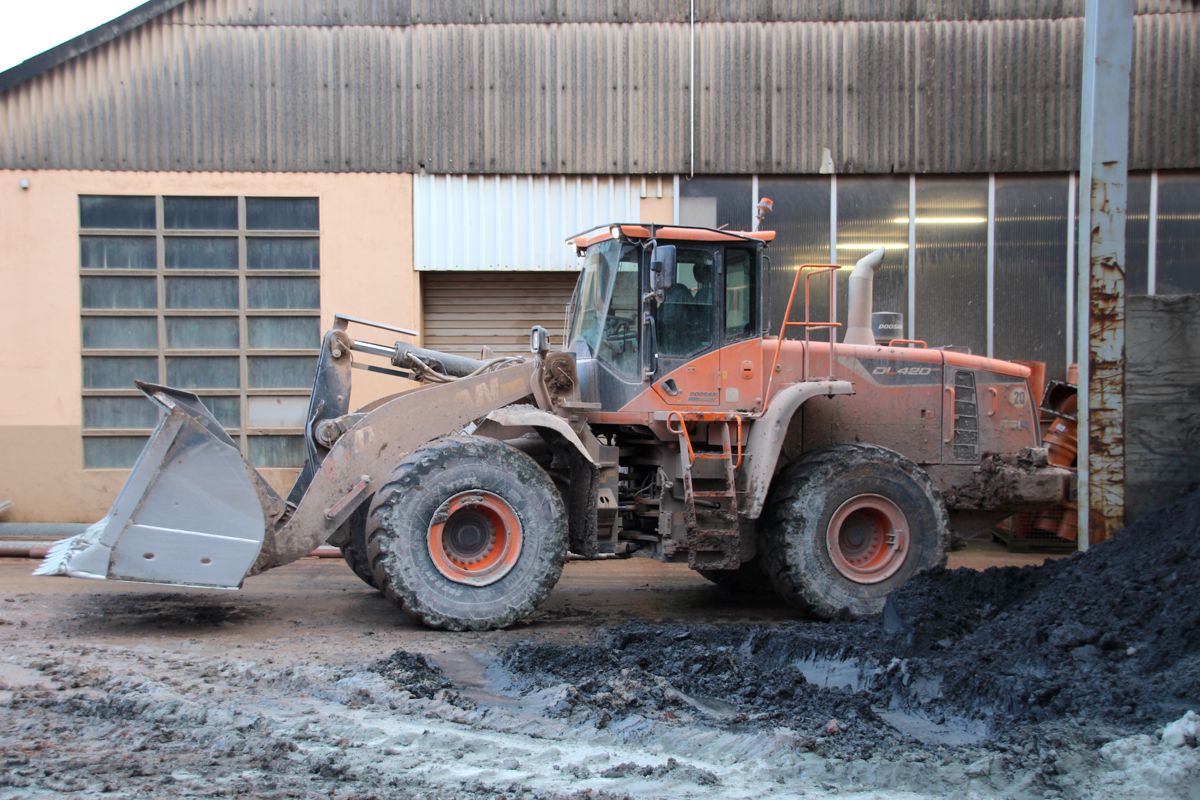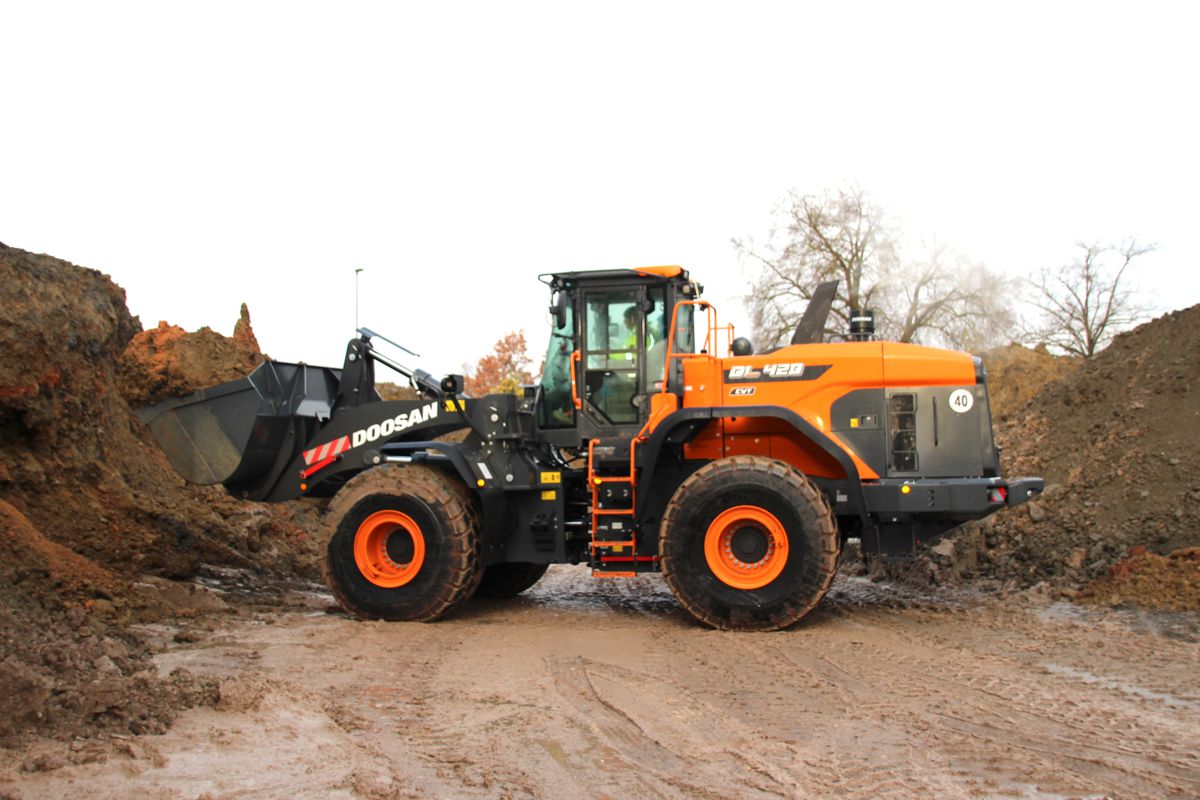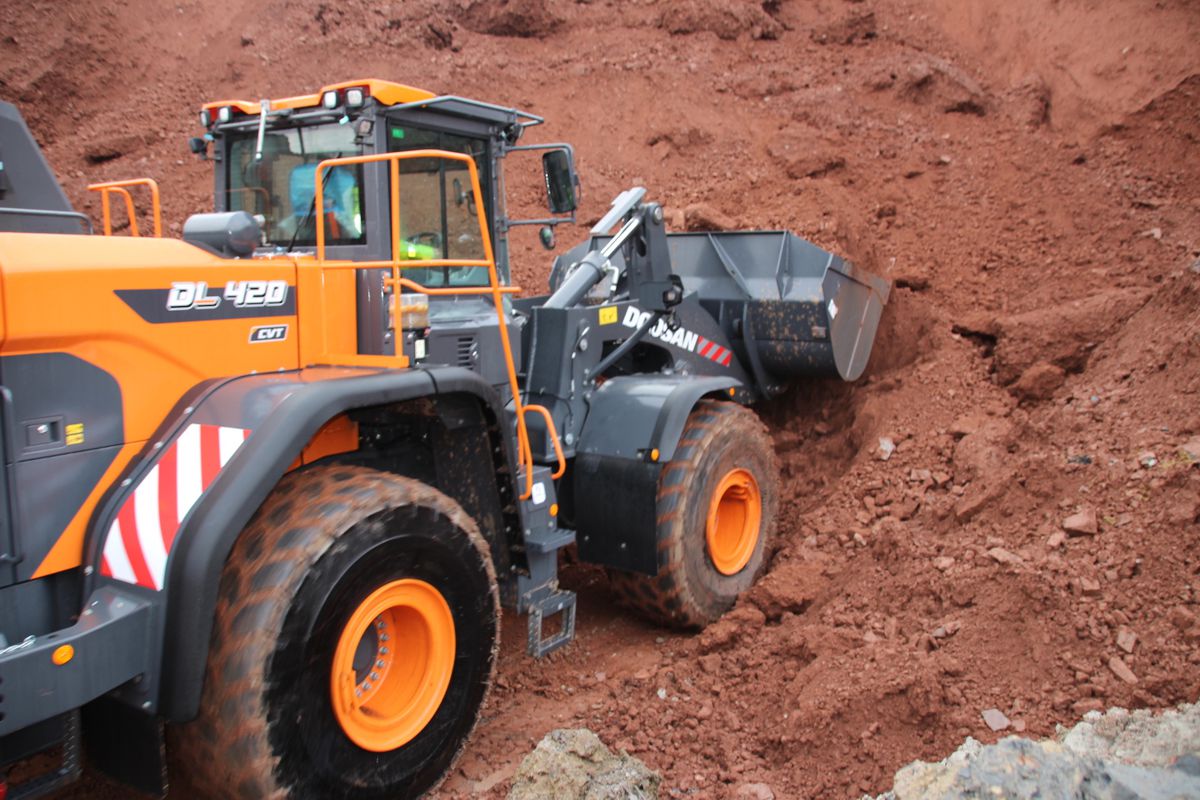Doosan DL420CVT-7 Wheel Loader owners benefit from enormous Fuel Savings
August Lücking GmbH & Co. KG is a 123 year old building materials producer based in north-west Germany. About two years ago, the company purchased a Doosan DL420CVT-5 wheel loader to feed materials for the brick production process.
The purchase decision was based on trials that showed enormous fuel savings of more than 9 l/h, which were confirmed when the new machine began operation. As a result, when the time came for a new wheel loader to be bought, the decision was made from the start: the new machine should also be a Doosan DL420CVT, this time the next generation DL420CVT-7 model.
When the purchase of the original wheel loader was on the agenda about two years ago, a Doosan DL420CVT-5 was tested on site in the company’s brick factory. The requirements for the loading of clay for the bricks are particularly challenging. The clay has a high density and therefore a high weight. In addition, the material is extremely sticky and tough. In order to penetrate the material with the shovel, a high degree of even force and high traction are required, especially on wet surfaces.
The tyres also play a major role here. Lücking relies on special tyres whose profile is more like that of a tractor than a wheel loader. The grooves of the tread on ‘standard tyres’ clog up quickly due to the greasy consistency. These difficult conditions also drive up fuel consumption.

A Bet with Consequences
The previous machine, a competitor’s wheel loader with a conventional converter transmission, required an average of around 23 l/h of fuel under these conditions. When the authorized signatory at Lücking, Richard Lemke, asked the wheel loader sales manager at Doosan, Marc Glesius, about the consumption to be expected under these conditions during the handover for the test operation, he cited 14 l/h, a value that Lemke found difficult to believe.
Richard offered Marc the following bet: “If the DL420 with the CVT transmission only consumes 14 l/h, i.e. around 10 litres less, I will buy it immediately.” The rest, as they say, is history. The test consumption was the targeted 14 l/h and the wheel loader has now been in service at the company for two years.
Richard Lemke added: “In times of enormously high fuel and energy prices, 10 l/h naturally make an enormous difference. In the last two years, the consumption of the DL420CVT-5 has levelled off at the 14 l/h already determined in the test operation.
“We also did not record any unscheduled machine failures during this period. Therefore, only a Doosan wheel loader with a CVT transmission came into consideration when purchasing a new vehicle. We are confident that the new wheel loader can confirm these positive experiences.”

The CVT Transmission
One of the main factors behind the low fuel consumption is the variable transmission. Marc Glesius said: “This transmission combines the advantages of a mechanical and hydrostatic transmission and excludes the disadvantages of both systems.
“The variable transmission switches continuously from the hydrostatic drive to the mechanical drive as the speed increases and depending on the application-related requirements. The advantages that this system offers include, in particular, the excellent traction that a hydrostatic transmission offers and driving over longer distances with a direct mechanical transmission.
“It owes the fuel savings to the lower engine speed compared to conventional transmissions, which is necessary to achieve maximum speed and traction.”

August Lücking GmbH & Co. KG
Founded in 1899 from an agricultural business in Paderborn, the brickworks today employs 170 people at its production site in Warburg Bonenburg. This fifth generation family-owned company is a modern, efficient industrial business with its own vehicle fleet.
Every year, 200,000 m³ of bricks, 300,000 m² of prefabricated ceilings and 50,000 m² of prefabricated walls are produced, as well as staircases, balconies and prefabricated parts for special applications.




















